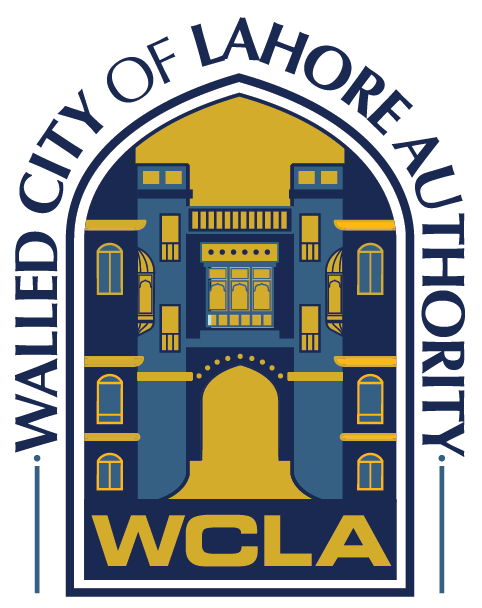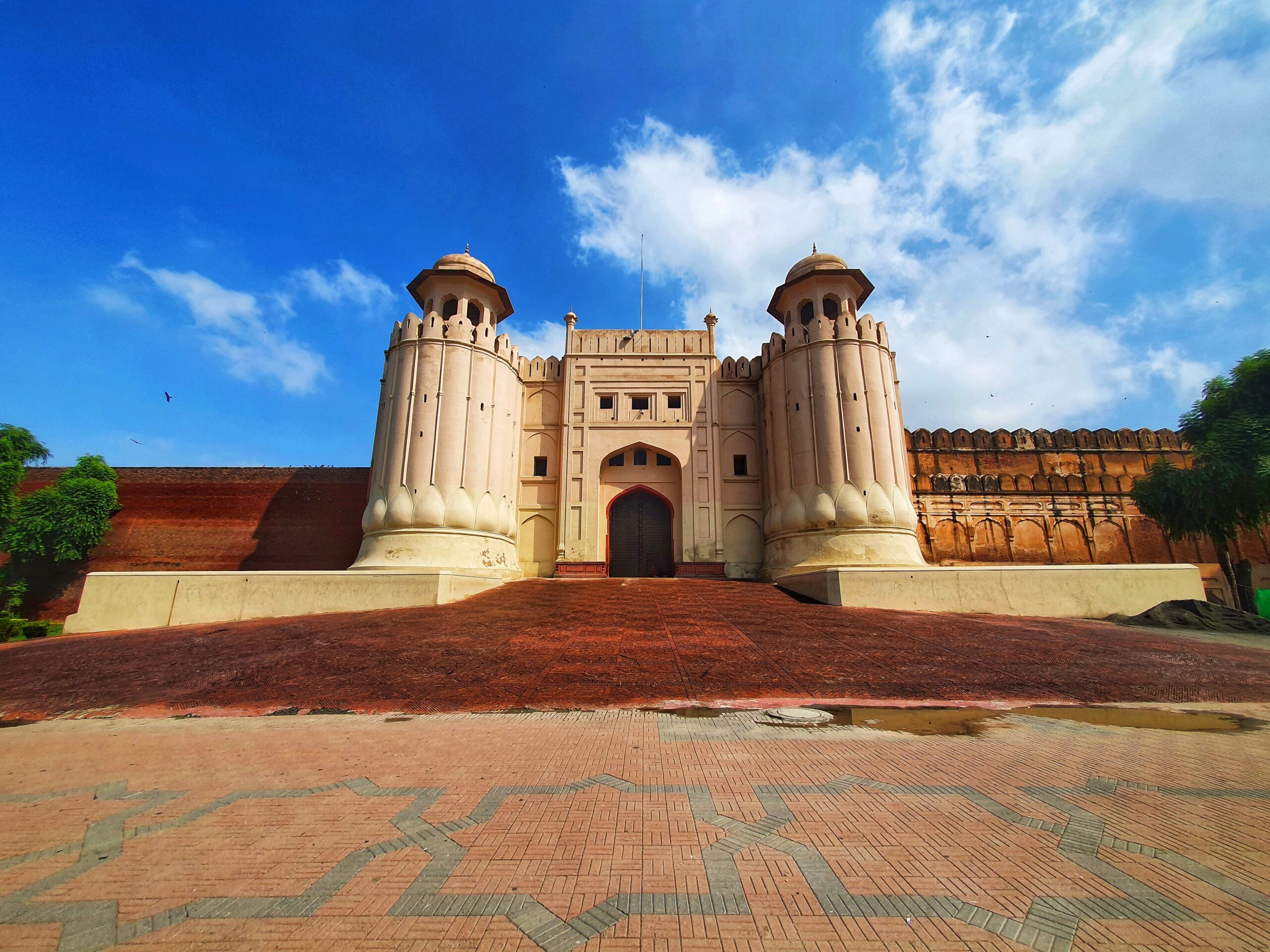
Monuments
Monuments of Greater Lahore
Lahore, often referred to as the cultural heart of Pakistan, is renowned for its rich history and architectural splendor. The city is home to a diverse array of monuments that reflect the grandeur and artistic brilliance of various eras, particularly the Mughal period.

Lahore Fort
This is probably the most charming and grand forts in entire Pakistan. Covering an area of 20 hectares, the size and structure that the fort has, was constructed by Emperor Akbar between 1556 and 1605. The succeeding emperors have all contributed to the styling of the fort; thus you can see different architectural ideas incorporated in Lahore Fort. Also known as 'Shahi Quila' among locales, the main attraction inside the fort are Sheesh Mahal, Alamgiri Gate, Naulakha pavillion and Moti Masjid. The fort was declared a World Heritage Site by UNESCO in the year 1981. The fort has some really wonderful and well maintained gardens all around the fort which further add to the beauty of the fort.
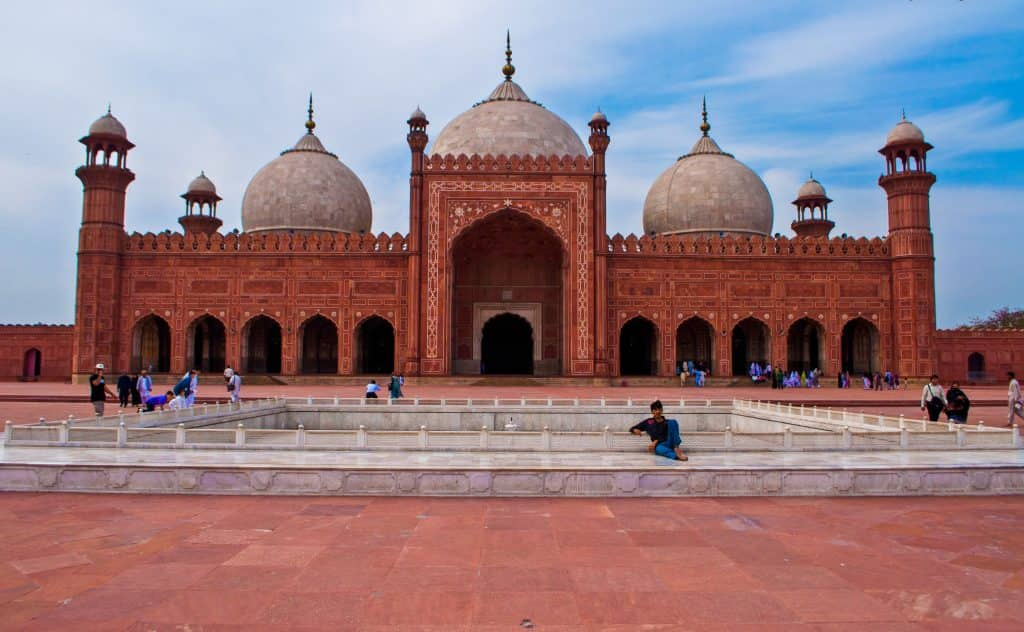
Badshahi Masjid
The mosque was built under the patronage of the sixth Mughal Emperor, Aurangzeb Alamgir. It was completed in 1673 under the supervision of Aurangzeb’s foster brother Muzaffar Hussain (also known as Fidaie Khan Koka) who was appointed governor of Lahore in May 1671 and held this post until 1675. He was also Master of Ordnance to the emperor. The construction of the mosque took about two years, from May 1671 to April 1673. The mosque was built opposite the Lahore Fort, illustrating its stature in the Mughal Empire. In conjunction with the building of the mosque, a new gate was built at the fort, named Alamgiri Gate after the Emperor. During the Sikhs rule, they used the mosque as a horse stable and Muslims were forbid to enter in Mosque. While British’s also used the mosque for military training including rifle and cannon fire range and later on they handed over the control of Mosque to the Muslims as a gesture of good will. A Committee was formed to restore the Holy place to its original glory. The Committee carried out extensive repair works from 1939 to 1960. Those repairs brought the mosque back to its original shape and condition. Capable of accommodating up to 60,000 worshippers, it is the second largest mosque in Pakistan.
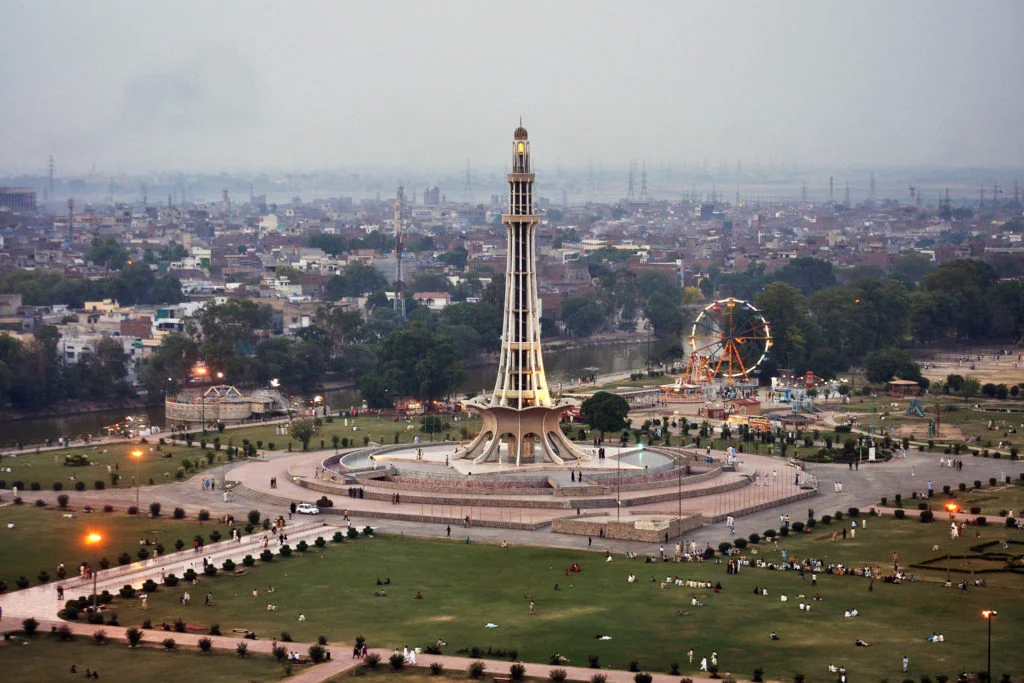
Minar-e-Pakistan
Minar-e-Pakistan is a towering symbol of Pakistan’s independence movement. Located in Iqbal Park, this monument marks the site where the Lahore Resolution was passed on March 23, 1940, which eventually led to the creation of Pakistan. The minaret, completed in 1968, is a blend of Mughal, Islamic, and modern architectural styles and stands as a national symbol of freedom and resilience.

Shalimar Bagh
In the heart of Lahore, the Shalimar Gardens stand as a testament to the grandeur of Mughal architecture and the exquisite artistry of Islamic garden design. Erected in 1641 under the patronage of Emperor Shah Jahan, these gardens embody the zenith of Mughal landscape aesthetics, offering a serene retreat from the contemporary world. This garden occupies some 80 acres of land and was completed at a cost of rupees six hundred thousand. Khalilullah Khan, Ali Mardan Khan and Mulla Alaul Maulk Tuni took charge of the project.

Jahangir Tomb
In the heart of Lahore, lies a timeless treasure, the magnificent tomb of Jahangir. Shahdara town lies north of Jahangir’s tomb which further adds to the beauty of the tomb. Step into the world where history comes alive and the grandeur of the Mughal empire stands testament to an era of unparalleled splendor. The fourth emperor of the Mughal dynasty, the son of the great Akbar, Jahangir (1605 to 1627), was known for his cultural and artistic achievements, but his legacy lives on most splendidly through his final resting place – the majestic Jahangir's Tomb.

Tomb of Allama Iqbal
Situated adjacent to the Badshahi Mosque, the Tomb of Allama Iqbal is the final resting place of Pakistan's national poet, philosopher, and visionary. The tomb, constructed of red sandstone and marble, reflects a blend of traditional Mughal and contemporary architecture. It is a site of immense cultural and historical significance, attracting visitors who come to pay homage to the man who inspired the idea of Pakistan.

Masjid Wazir Khan
The Wazir Khan Mosque sat astride the historic route that the Mughal nobility would traverse as they entered the city and made way to the royal residence in the Lahore Fort. The Mosque comprises a prayer chamber and a large courtyard. The latter is surrounded on its northern, southern and eastern sides with 28 hujras and two Pavilions facing each other across the width of the courtyard. There are four Minars marking the four corners of the courtyard. An important feature of the entrance system of the Mosque is the Calligraphers bazaar that crosses the axis of entrance at a right angle. The Mosque complex, in the form that it has survived, still has a singular outstanding attribute that places it in the frontline of the major monuments of the world- the exuberant architectural decorations that embellish its exterior and interior surfaces. In essence these are of two kinds- exterior surface decorations which are chiefly in the form of glazed ceramic tile murals; and interior decorations in the form of naqqashi wall painting- a semi –dry form of fresco.

Data Ali Hajvery's Tomb
Data Ali Hajvery’s Tomb, also known as Data Darbar, is one of the most revered Sufi shrines in South Asia. Located in the heart of Lahore, this tomb is the resting place of the renowned Persian Sufi saint, Ali Hujwiri, also known as Data Ganj Bakhsh. The shrine is a major religious and cultural landmark, attracting millions of devotees and visitors annually who come to seek spiritual solace and blessings.
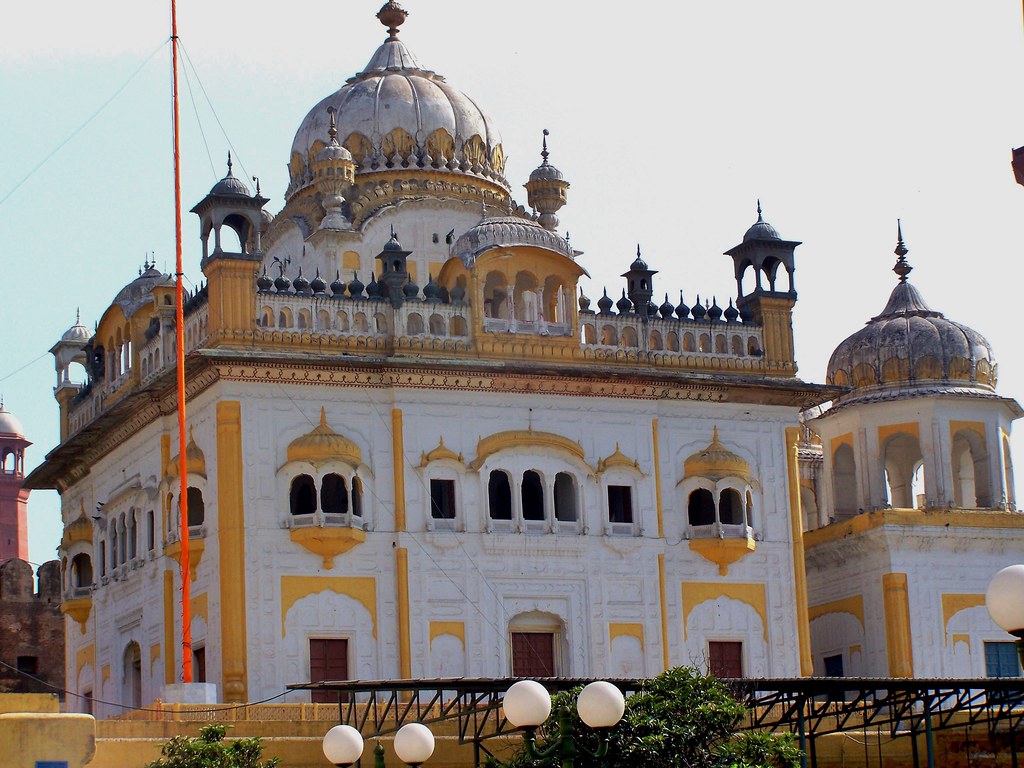
Gurdwara Dera Sahib
Gurdwara Dera Sahib is a significant Sikh shrine located in Lahore, commemorating the martyrdom of the fifth Sikh Guru, Guru Arjan Dev Ji. Built at the site where Guru Arjan Dev Ji was martyred in 1606, the gurdwara is an important pilgrimage site for Sikhs from around the world. The structure combines traditional Sikh architectural elements with a serene atmosphere, reflecting the spiritual and historical importance of the site.

Chauburji
Chauburji, meaning "Four Towers," is a historic monument that stands as a remnant of Lahore’s Mughal era. Built in 1646 during the reign of Emperor Shah Jahan, Chauburji was originally the gateway to a large garden. Its distinct architecture, featuring ornate tile work and intricate calligraphy, represents a blend of Mughal and Persian influences. Despite suffering damage over the centuries, Chauburji remains a significant cultural landmark and a symbol of Lahore’s rich architectural heritage.

Sunehri Masjid
Traversing through the majestic giant arches of Delhi Gate, one of the thirteen gates of the walled city of Lahore, you take your way to the Kashmiri Bazaar and right at the Junction of Shah Almi and Rang Mahal Chowk you will come across a golden glittering majesty, the Golden Mosque. Popularly known as Sonehri Mosque in the local language, you will see it standing on a masonry platform, about one storey above the street level.

Shahi Hamam
Commonly known as Shahi Hamam, the Wazir Khan Hamam was built by Sheikh Ilmuddin Ansari in 1634. The Hamam is the only surviving public bath from the Mughal era in Pakistan. The single-storey structure is spread over 1,110 square feet and was built using brick tiles and limestone cement. The building is a combination of Turkish and Persian style. It reminds one of the traditional Persian hamams which are still vogue in Iran. It is a single storey building with beautiful paintings and has three types of bathing facilities such as cold, hot and steam bath. All these facilities have been divided into separate sections. Massage and other similar facilities were also provided. In 2012 the Walled City of Lahore Authority, understanding the importance of Shahi Hammam, removed 52 encroachments from its façade and set out the conservation plan. This Conservation process was completed in 2016 and the same year Shahi Hammam won the Award of Merit by UNESCO for best conservation practices in Pakistan. During the conservation, the white wash over fresco work was removed through certain chemicals for revealing the original fresco underneath. Fresco experts from Sri Lanka who toiled with the students of National College of Arts carried out this task. Marble floors were laid in all the 21 rooms of the Hammam in 1991 restoration by the Archeology department. These floors were excavated during the 2014 conservation to reveal the hypocaust system.

Barkat Ali Islamia Hall
In 1887, the hall's journey began to unfold when Sir Syed Ahmad Khan graced Lahore, attending a pivotal conference at the Anjuman. Recognizing the need for a dedicated hall to foster Islamic values, the foundations for what would be known as the Mohammadan Hall were laid outside Mochi Darwaza in 1888, with a modest budget of Rs.1800. The craftsmanship of MISTRI MANGA of Lahore, a descendant of the illustrious Mimar family known for their contributions to Mughal architecture in Lahore and Delhi, was enlisted. MISTRI MANGA's lineage would later include M.A. Rahman Chughtai, the celebrated artist and founder of the Chughtai Art Gallery and Museum in Lahore.

Bradley Hall
Bradley Hall Built in the late 19th century on Rattigan Road Lahore, it was once the National college. This historic hall had hosted to almost all the notable leadership of India, particularly for political figures in Punjab. The hall has been associated with Charles Bradlaugh a British political activist and member of parliament and he was a great supporter of independent India. Charles Bradlaugh was one of the notable liberals and freethinkers of Victorian England, and he was an early advocate for women’s right to vote. The building of the hall has designed with British architectural elements but by keeping with local climatic, requirements in view. Surendar Nath Banerji, one of the earliest Indian political leaders had inaugurated the hall on October 30, 1900.

Fakir Khana Meuseum
The museum itself is in a small house in the inner city. The Fakirs were an important family during the Sikh rule of Punjab in the 1700s. Fakir was an ascetic and his sons took over in his role as an important member and minister in the court of the Sikh ruler Ranjit Singh. This small museum showcases the history of Lahore and contains important pieces such as relics from the Prophet Muhammad’s (P.B.U.H) time as well as swords, jewels and coins dating back to the Sikh era and the Mughal rule of the city. Collections within the Museum have been passed through generations within the Fakir Family and number approx 30,000 items from British, Sikh and Mughal eras. The Museum has survived several wars and the India-Pakistan partition. Held within the Fakir Family were several prominent mansions (Havelis) in and around Lahore e.g. Mubarak Haveli and others. The art from those mansions and personal pieces collected by several prominent members of the Fakir Family have also been incorporated into the Fakir Khana collection. Historically the Family was known to possess a large collection of jewels and jewelled artifacts-many of which were personal gifts to the Fakir Brothers by Maharajah Ranjit Singh.

Mariam Zamani Masjid
This is one of the most ancient mosques in the city. It is situated close to the Masti Gate of the city, opposite the eastern walls of the fort. It was built in 1023 A.H. (1614 A.D) during the reign of Jahangir, by his mother, Mariam Zamani. According to the Ain-i-Akbari , she was the daughter of Raja Behari Mal and sister of Raja Bhagwan das. The style of the building is transitional between the Pathan and the Moghal. Its massive domes, one large and two side ones, and bulky arches, are in the old pathan style but the gate ways, the balconies and the side- rooms are more moghal in their construction then pathan. The mosque is surmounted with four arched towers, one at each corner. It is built of bricks, cemented by chuna of the best quality, so excellent, indeed, that the strength of the building seems to depend entirely on its adhesive properties. In the center of the courtyard of the mosque is a fountain of water for the ablution of the faithful. The masjid was used by Ranjit Singh as a gun and powder manufactory, and on that account came to be called the barut –Khana wali masjid. The establishment was under the superintendence of jawahar Mal Mistri. The mosque was restored to the mohamadans by Major Mcgregor, Dupty Commissioner of Lahore, in 1850, together with the shops and the houses attached to it.

Kamran Baradari
Kamran Mirza, sometimes known simply as Kamran, (1509 – 5 (or 6) October 1557) was the second son of Babur, the founder of the Mughal Empire and the first Mughal Emperor. The only significant architectural structure built by Kamran exists today in Lahore, Pakistan. It is called Kamran ki Baradari. Bara means twelve and dar means doors. Kamran ki baradari was a twelve door building on the bank of River Ravi. The river changed its course over time, with the result that the Baradari stands not on the bank but in the waters as an island while the gardens have deteriorated.
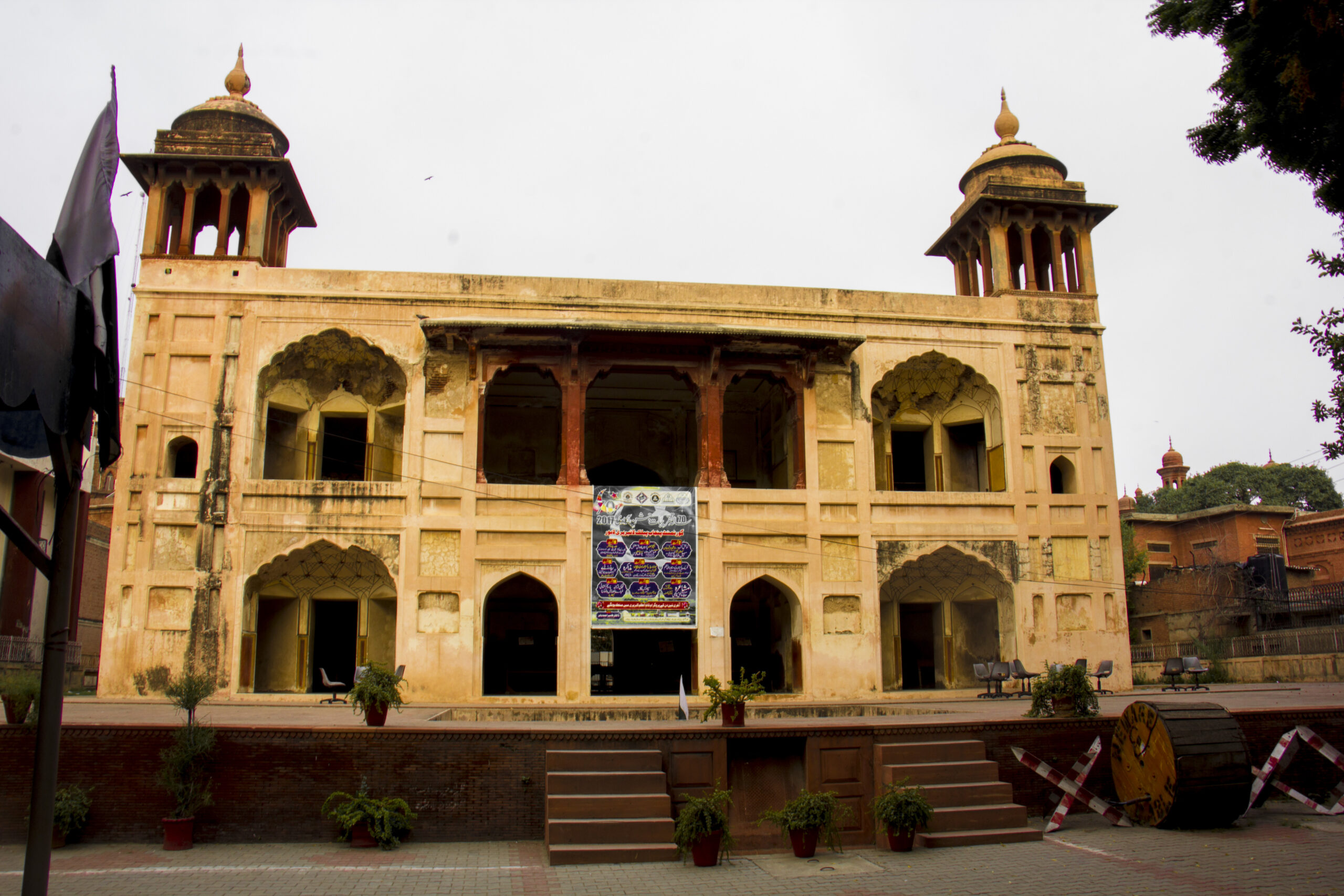
Wazir Khan Baradari
Wazir Khan's Baradari is one of the finest and largest of the genre, and is in well preserved state. It is perched between the Punjab Public Library (PPL), National College of Arts (NCA) and the Lahore Museum and is approached from the Punjab Public Library Road. It has been put to good use as a reading room for the adjoining library and is therefore considered a part of the library. The building is named after its founder Hakim Ilmuddin titled Wazir Khan, the same grandee of Shah Jahan's court who gifted the city of Lahore with such sumptuous monuments as Wazir Khan's Mosque and Wazir Khan's Hammam, also known as Shahi Hammam, in the Walled City.

Qutub ul din Aibak Tomb
Qutubuddin Aibak was a slave from Turkistan (in present day Central Asia), and owned by Sultan Shahabuddin Muhammad Ghauri, who ruled parts of present day Afghanistan and Pakistan. Impressed by the loyalty and services of Aibak, Ghauri started treating him like his own son. Upon Ghauri’s demise, the occupied Indian territories eventually came under the possession of Aibak, who became the first Muslim Sultan of Delhi — he was enthroned in Lahore though — thereby initiating the period that we now refer to as ‘the Delhi Sultanate’ (1206-1526 CE). Due to the successive ‘slave’ Sultans, the first period of Delhi Sultanate is also known as the ‘Slave Dynasty’
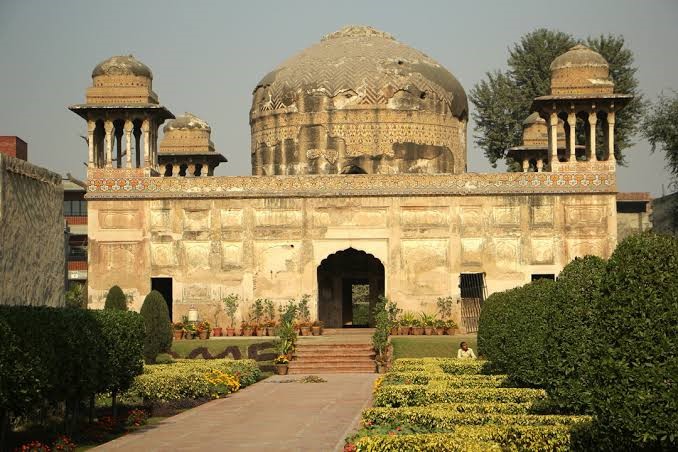
Tomb Of Dai Anga
The Tomb of Dai Anga , also known as the Gulabi Bagh is a 17th century Mughal tomb complex located in the Mughal-era suburb of Begampura, outside the Walled City of Lahore, Pakistan. The mausoleum was built in honour of Dai Anga, the wet nurse of Shah Jahan, and wife of Murad Khan of Bikaner. It is located along the Grand Trunk Road on one of the former routes between Lahore and Delhi. It is also located close to the 17th century tomb of Hazrat Ishaan, and the 18th century Cypress Tomb.
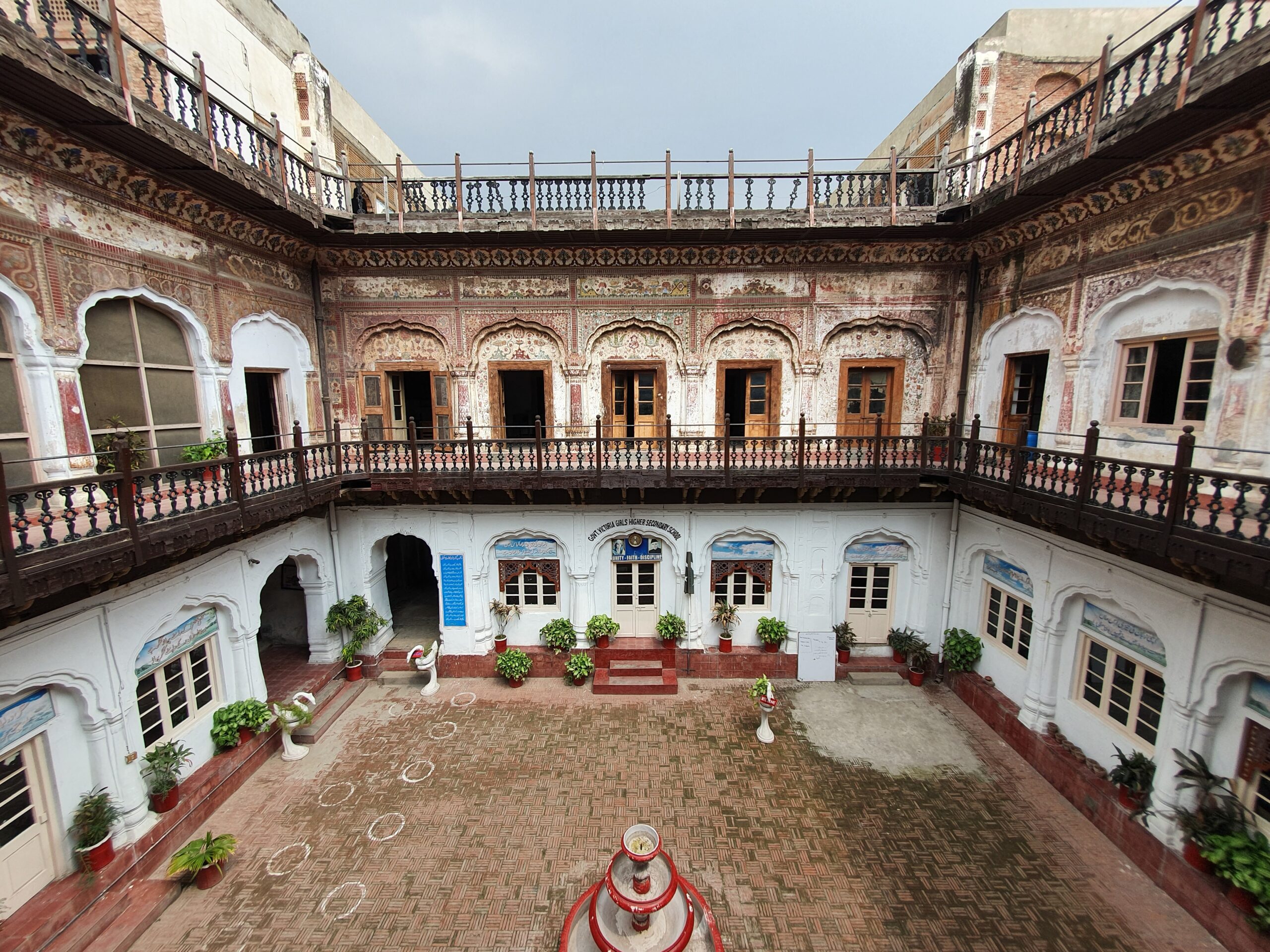
Haveli Nau Nihal Singh
Nau Nihal Singh's haveli is situated inside Mori Gate. This lofty haveli is reckoned among the most magnificent buildings of the city of Lahore. Nau Nihal Singh used it as his private residence. It contains numerous spacious chambers, halls and balconies. The roofs are decorated with paintings and mirrors, and are worked in gold. The walls are richly and tastefully ornamented with glass and artificial flowers. It is now government property used as Victoria Girls' High School. The haveli, rectangular in plan, is a fairly large building. Its entrance is on the west side and the façade has been divided into two clear sections: one housing the entrance gate, which is profusely decorated and the other is simple but has plenty of fenestration. If there was any decoration on this area it has been destroyed by the ravages of time. The building had a basement and four-storeys above the ground level. The basement is also approachable now. Out of the four-storeys above ground level, two-storeys encompass the whole area, the third-storey is partially crumbled while the fourth-storey stands in the northwestern corner and is called Shish Mahal. Shish Mahal in fact is like the Mughal’s Hawa Mahal or Palace of Winds. Hawa Mahal used to be at the top of the royal buildings where fresh breeze could be enjoyed and at the same time a view of the surroundings could be relished. The Shish Mahal of Nau Nihal Singh’s haveli served these purposes very well.

Mubarak Haveli
If ever there was a haveli that could be labeled as among the oldest, and also the finest, without doubt it would be Mubarak Haveli, inside Mochi Gate area. It was here that the Koh-e-Noor Diamond was recovered from a trapped Afghan king. This 'haveli' has stories galore, ones that make history so interesting. A colossal ‘haveli’ built by Mir Bahadur Ali, Mir Nadir Ali and Mir Bahar Ali, sons of a well-known 'Tabeeb' and 'Hakeem' during the time of Mughal emperor Muhammad Shah. It took three years to build and when the three brothers moved in, Bahadar Ali's wife gave birth to a son. This was seen as a good omen and the 'haveli' was named Mubarak Haveli. With the start of the Sikh period began years of pillage and looting. Sikh mobs would come and loot whatever they could lay their hands on. The grand Mubarak Haveli remained empty for a few years and people inside the city began to steal the bricks of the western portion of the haveli. It presented a deserted look, prompting Maharajah Ranjit Singh to take it over, for himself and his guests. Afghan king Shah Shuja and his family, who were fleeing from Kabul because of fighting over the Afghan throne, came to Lahore as Ranjit Singh’s guests. The crafty Sikh ruler made them his prisoners and released them only after they gave him the unrivalled Koh-e-Noor diamond.

Bibi Pak Daman
Bibi Pak Daman is famous for being the shrine of 6 Ladies from the household of the Prophet Mohammed, Including Ruqayah binte Ali the daughter of Hazrat Ali the forth caliph of Islam the other five graves are said to be those of hazrat Muslim bin Aqeel’s sisters and daughters. Legend has it that these ladies were traveling alone after the events at karbala and when they reached Lahore the ruler at that time tried to arrest them because they were gaining a following and not wanting that, Bibi Pak Daman prayed to God and asked him to open the earth and take them in, when the soldiers came to arrest them the earth split into two and they went in only a little of the Dupatta (scarf) of Bibi Ruqayah remained and when the lead soldier tried to get hold of that it too slid into the soil, Thus the name Bibi Pak Daman meaning even the scarf of the lady was pure and thus could not be touched.
